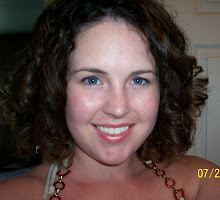I quilt so many quilts, that I've seen just about everything! One thing about long-arm quilting, as soon as I pin the quilt onto the machine, it is obvious how well the quilter kept seam allowances, attached borders, and pieced backing. Especially when borders and backing are not done with care, it can create problems with quilting. Usually, these problems are not obvious unless you are hanging the quilt as a wall hanging, or when you are attaching binding. However,I feel that if you are going to take the time to make the quilt, why not finish it properly?
The biggest problem with quilt tops is the borders. I know it's a pain, it took me years to get into the habit, but you MUST measure and cut your borders to length BEFORE you sew them to the quilt center! Otherwise, without even knowing it, the border will be eased onto the quilt, causing it to be slightly longer than the middle of the quilt. Since the border is too long, although it may look like it fits just fine, there will be extra fabric around the perimeter of your quilt. In some cases, your borders can be 1 or 2 inches too long, causing puckers and unsquare corners on your quilt! (not to mention a headache to quilt) This applies whether you are quilting it yourself or sending it to a quilter for finishing. So, measure your quilt center and cut your borders to fit. Also, using a walking foot will help prevent the bottom fabric from easing too much as you sew it.
Another pet peeve of mine is leaving the selvage on your backing! I know it is easier, I know if makes a nice straight line to sew together, but DON'T DO IT!!! The selvage is there to finish the edge of the fabric so it doesn't fray. The selvage is not stretchy like the fabric, and when it is pieced into the back, even as a seam allowance, it does not allow the seam to stretch like the rest of the backing. When this happens, the quilt back cannot be properly tightened on the quilting machine because stretching the rest of the back would rip out the seam on the selvage. This means your quilt will not lay as nicely, it may have puckers or folds in the backing, and it will just not be as nice.
It is really not hard to remove the selvage before piecing the back. If you don't prewash (like me) you can just keep the fabric as it comes off the bolt, fold it over lengthwise enough times to make it manageable, lay it on your cutting mat, line the ruler up square with the edge, being careful to remove all the selvage, and rotary cut it away. This will leave you with a nice straight edge, and prevent the selvage from messing up your quilt. If you do prewash, just iron your fabric and then follow the same steps.
OK, I'm done lecturing you for now. Hopefully you learn something! I would post a picture of what I'm talking about, but I'm not sure anyone would like me to use their quilt as an example. Of course, mine are always perfect, right? :-)
Subscribe to:
Post Comments (Atom)





2 comments:
Amen!! When I gat a longarm and started quilting for others is when I learned how important it is to measure the borders and put them on properly. Yikes, the things I've seen. Have you ever had one eight (yup 8) inches too small? Thank you for sharing.
Wow, 8 inches? I'm not sure I've ever seen one that bad! I really am lucky, and serve a great group of quilters. I can usually work out the problems so their not obvious. Still, I just hate stretching too much or easing extra fabric, since it's just not as nice as doing it right in the first place! Thanks for your comments.
Post a Comment